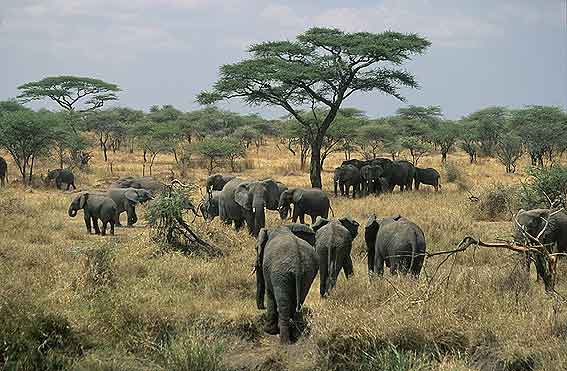Masai MWildlife in Kenya'sara suffering massive decline By Michael Logan
 Nairobi - The jeep bumps along a dusty track, its occupants peering out into the long grass, studded with the occasional Acacia tree, that carpets the open plain as far as the eye can see.
Nairobi - The jeep bumps along a dusty track, its occupants peering out into the long grass, studded with the occasional Acacia tree, that carpets the open plain as far as the eye can see.
Scores of wildebeest, zebra and impala feed contentedly across the plain as the sun reaches the end of its long trek down the sky.
Suddenly a finger points and the jeep shudders to a halt. There, emerging from the grass, comes a solitary lioness.
She ignores the jeep completely as she crosses the road, her powerful haunches slinking lazily up and down, and then disappears again into the grassy sea on the other side.
It is the kind of moment tourists pay thousands of dollars to see in Kenya's world-famous Masai Mara National Reserve.
Yet according to the authors of a recently published study, such sights are becoming increasingly rare as animal populations plummet due to the massive population growth of the Masai tribe.
The study by the International Livestock Research Institute (ILRI), published in the British Journal of Zoology, found that numbers of giraffe, warthog, impala, topi and hartebeest plunged between 1979 and 2003.
Losses were as high as 95 percent for giraffes, 80 percent for warthogs, 76 percent for hartebeest, and 67 percent for impala. The drop in prey animals also led to a fall in predator numbers.
"The situation we documented paints a bleak picture and requires urgent and decisive action if we want to save this treasure from disaster," said Joseph Ogutu, the lead author of the study and a statistical ecologist at ILRI.
The Masai Mara, along with the adjoining Serengeti, in Tanzania, is home to an amazing variety of wildlife.
Each year it plays host to one of nature's greatest spectacles: the annual migration of millions of wildebeest, which face crocodiles, lions and other predators on their long trek for fresh pasture.
But it is also the homeland of the Masai tribe. According to the study, their population growth is the reason for the drop in numbers.
The study documented huge increases Masai numbers - in one settlement along the edge of the reserve the number of huts rose from 44 to 2,735 between 1950 and 2003.
The cattle-keeping Masai allow their herds of cattle to encroach on the park illegally, thus eroding the wildlife habitat.
"In particular, our analysis found that more and more people in the ranchlands are allowing their livestock to graze in the reserve, an illegal activity the impoverished Masai resort to when faced with prolonged drought and other problems," Ogutu said.
However, according to William Deed from the Mara Conservancy, which runs the Mara Triangle - a 510-square-kilometre section that covers a third of the park - the picture is nowhere near as grim as it was when the research was ended six years ago.
"I think things were that bad ... but if the researchers come back tomorrow, they will see the numbers are up," he said. "For the herbivores, just visually, you can see the population is thriving."
Trans-Mara County Council appointed the Mara Conservancy in 2001 after concerns that the reserve was being badly run.
"As soon as conservancy came into place, we improved security, infrastructure and ranger stations," said Deed.
Deed said that incidences of Masai grazing inside the Triangle were rare, adding that the situation was also improving outside the Mara Conservancy's sphere of influence.
The decline in wildlife is not just due to habitat erosion, however. Big cats have suffered in direct conflicts with the Masai, who have in recent years been known to poison lions that threaten their cattle.
The report authors want to encourage schemes in which the Masai receive rent from private game lodges to allow wildlife onto their properties, saying this has been shown to increase the number of predators.
Prior to 2001, poaching was also a major issue.
Now poaching and illegal hunting is so rare in the Mara Triangle that the Mara Conservancy's rangers are patrolling out in the rest of the park.
According to Deed, the outlook for the big cats has actually improved as a result.
"We had one lady do a study of lions and she said that population has actually gone up by 50 per cent, to about 60 individuals," he said. (dpa)